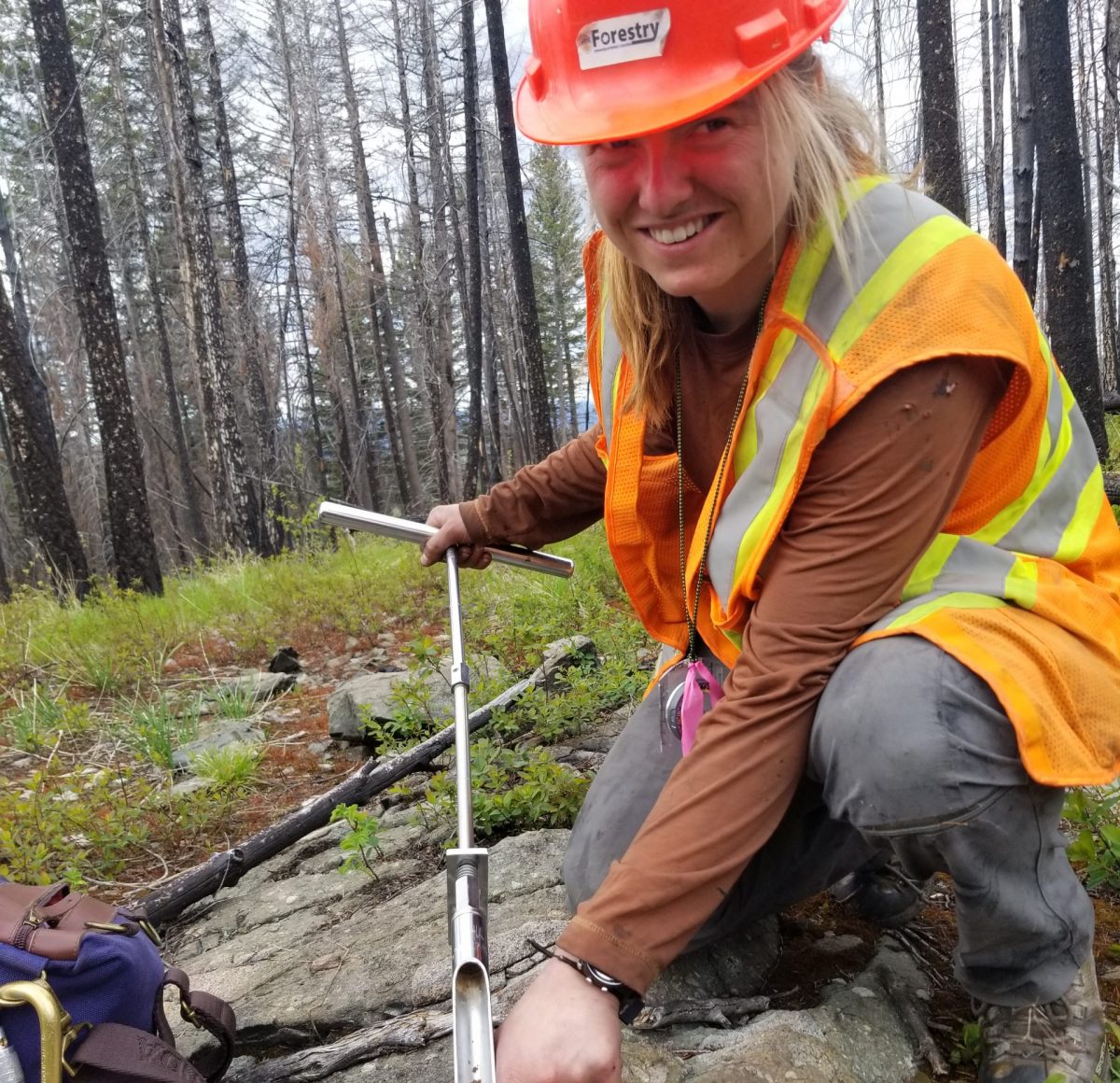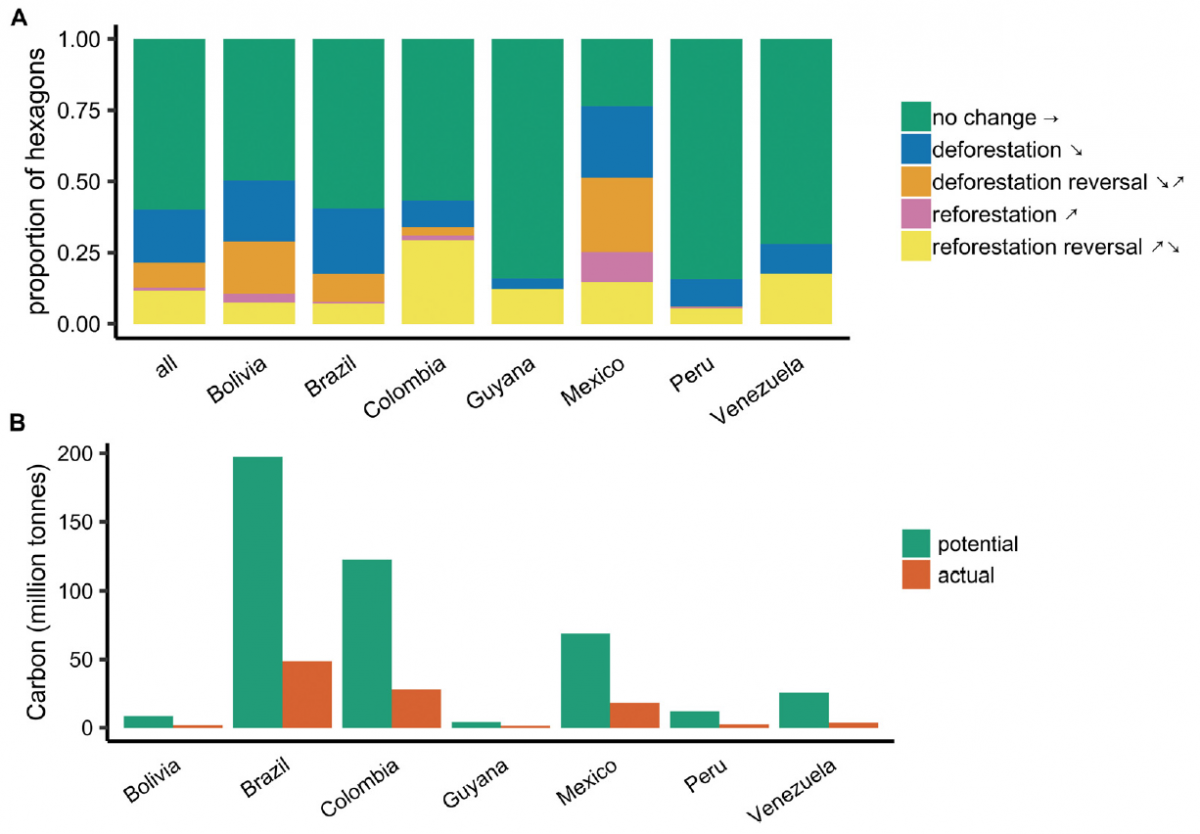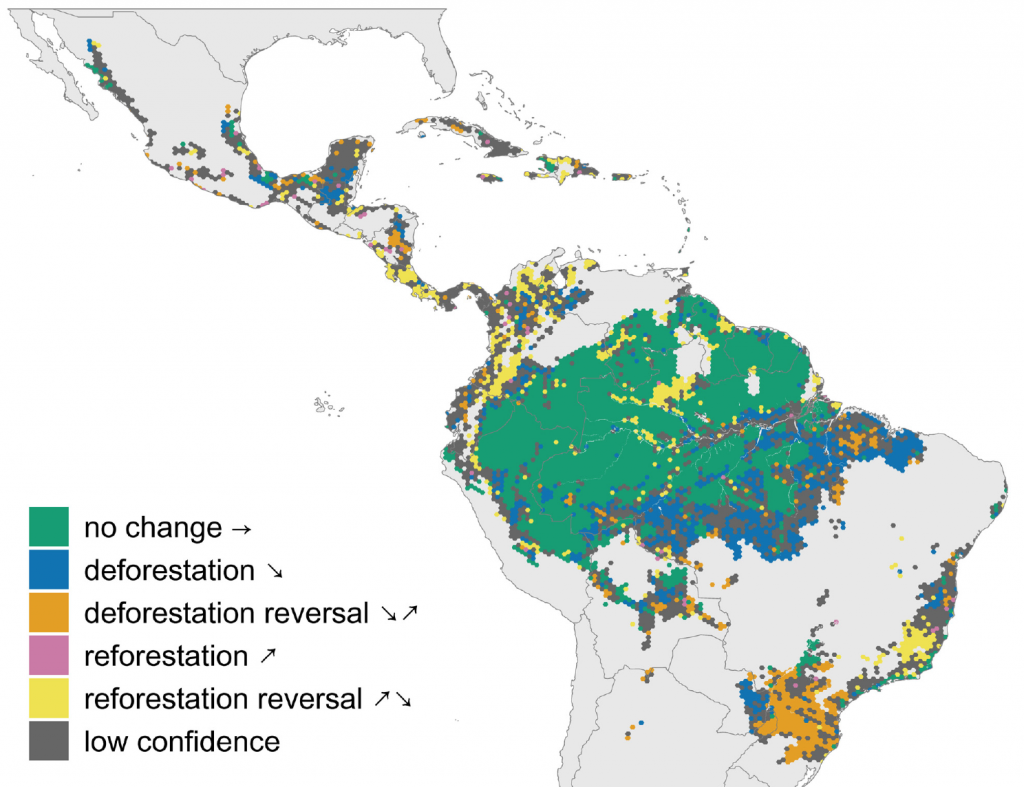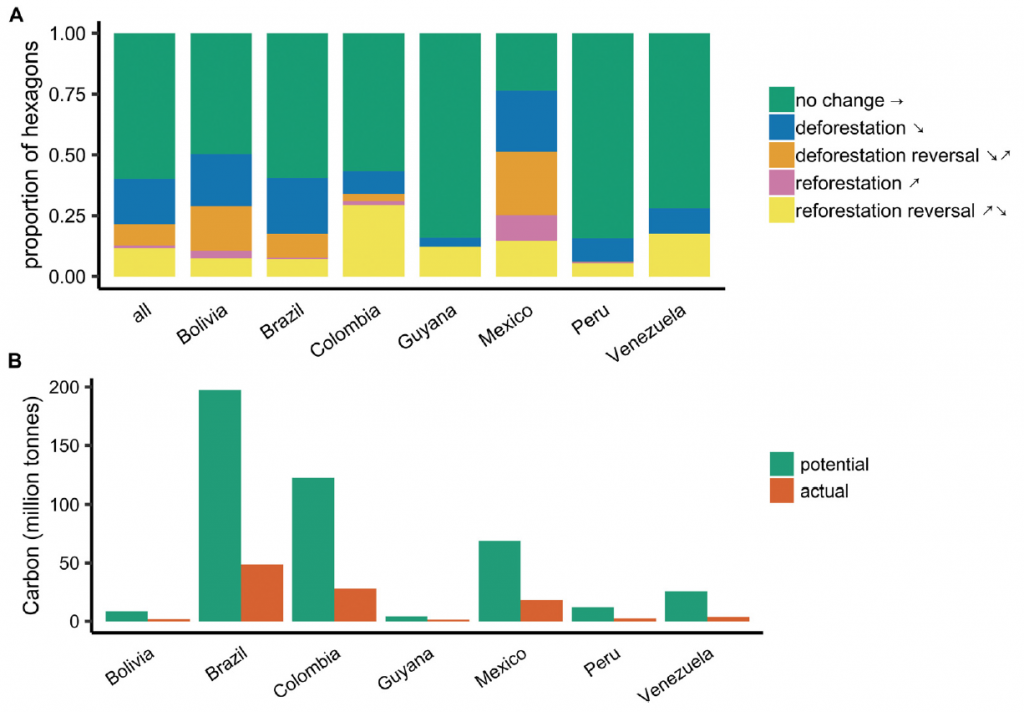Congratulations to Sarah Smith-Tripp, the first graduate student from the lab to defend her MSc thesis! Sarah’s thesis focused on understanding the relationship between forest canopy structure and microclimate in burned forests in BC’s interior. Sarah will be sticking around UBC as a PhD student in the Coops’ lab in forestry. Stay tuned for the publication with her results soon!
Author: Schwartz Lab
NEW PAPER OUT IN FRONTIERS IN FORESTS AND GLOBAL CHANGE
Reversals of Reforestation Across Latin America Limit Climate Mitigation Potential of Tropical Forests
Carbon sequestration through tropical reforestation and natural regeneration could make an important contribution to climate change mitigation, given that forest cover in many tropical regions increased during the early part of the 21st century. The size of this carbon sink will depend on the degree to which second-growth forests are permanent and protected from re-clearing. Yet few studies have assessed permanence of reforestation, especially not at a large spatial scale. Here, we analyzed a 14-year time series (2001–2014) of remotely sensed land-cover data, covering all tropical Latin America and the Caribbean, to quantify the extent of second-growth forest permanence. Our results show that in many cases, reforestation in Latin America and the Caribbean during the early 21st century reversed by 2014, limiting carbon sequestration. In fact, reversals of reforestation, in which some or all gains in forest cover in the early 2000s were subsequently lost, were ten times more common than sustained increases in forest cover. Had reversals of reforestation been avoided, forests could have sequestered 0.58 Pg C, over four times more carbon than we estimate was sequestered after accounting for impermanence (0.14 Pg), representing a loss of 75% of carbon sequestration potential. Differences in the prevalence of reforestation reversals across countries suggest an important role for socio-economic, political, and ecological context, with political transitions and instability increasing the likelihood of reversals. These findings suggest that national commitments to reforestation may fall short of their carbon sequestration goals without provisions to ensure long-term permanence of new forests.
Trajectories of forest change in tropical Latin America and the Caribbean. Light gray areas indicate biomes other than tropical forest. Dark gray areas indicate forested regions where noisy trajectories prevented classification. Arrows in the legend illustrate the shape of the forest cover trajectory change over time.
(A) Relative proportions of hexagon forest cover change trajectories across countries and biomes. Seven countries with the largest amount of tropical forest area are shown; see Supplementary Table S1 for data on additional countries. Hexagons that could not be assigned a trajectory with high confidence are omitted. (B) Comparison of carbon sequestration potential without reforestation reversal and estimated actual carbon uptake in seven LAC countries with most tropical forest area.
Full paper can be found here
NEW PAPER OUT IN GLOBAL CHANGE BIOLOGY
A catastrophic tropical drought kills hydraulically vulnerable tree species
Drought-related tree mortality is now a widespread phenomenon predicted to increase in magnitude with climate change. However, the patterns of which species and trees are most vulnerable to drought, and the underlying mechanisms have remained elusive, in part due to the lack of relevant data and difficulty of predicting the location of catastrophic drought years in advance. We used long-term demographic records and extensive databases of functional traits and distribution patterns to understand the responses of 20–53 species to an extreme drought in a seasonally dry tropical forest in Costa Rica, which occurred during the 2015 El Niño Southern Oscillation event. Overall, species-specific mortality rates during the drought ranged from 0% to 34%, and varied little as a function of tree size. By contrast, hydraulic safety margins correlated well with probability of mortality among species, while morphological or leaf economics spectrum traits did not. This firmly suggests hydraulic traits as targets for future research.
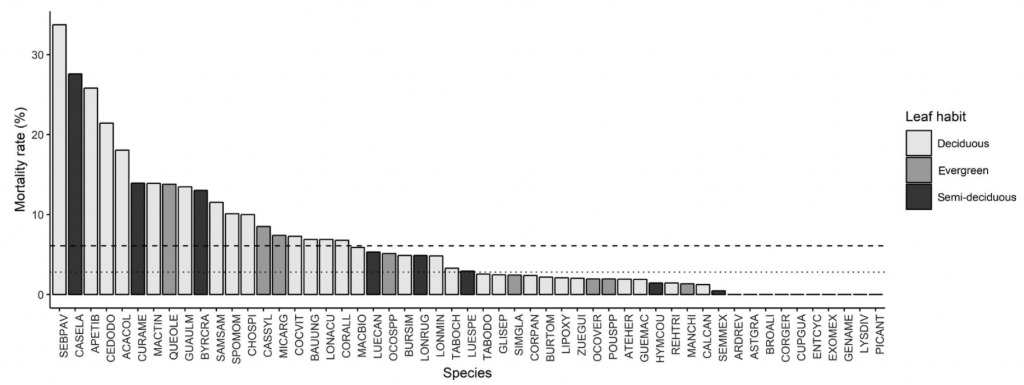
Species-specific mortality rates during an extreme drought for 53 species in seasonally dry tropical forest in northwestern Costa Rica using the combined dataset of trees sampled in 2015 only. The dotted line represents average plot-level mortality rates from 2009–2014 in 18 long-term forest plots (trees >10 cm diameter at breast height) and the dashed line indicates the average plot-level mortality rate during the 2015 El Niño Southern Oscillation derived from the same plots. Refer to Data Table S1 for species codes. Species are color-coded by leaf phenology (i.e., evergreen, deciduous, or semideciduous)
Full paper can be found here
